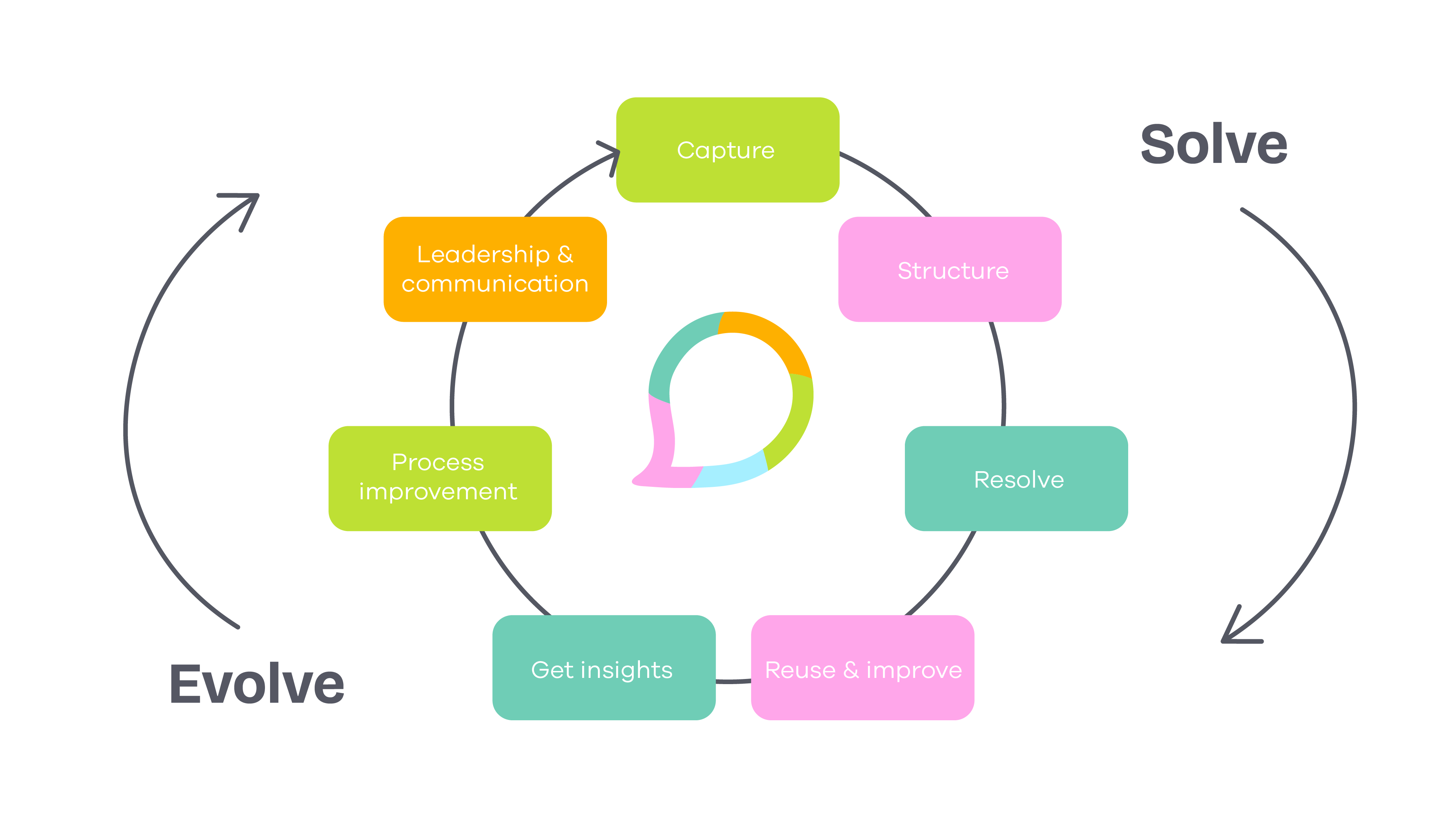The idea behind “Solve and Evolve“
We understand that responding to incoming questions quickly and smoothly is essential. But just as important is the ability to grow through data-driven insights. It’s all part of what keeps your support in tune with customer expectations, ready to tackle new challenges and needs.
This approach to customer service as two interconnected parts is what we call “Solve and Evolve.” It’s about solving today’s problems effectively while making sure you’re even better prepared to handle tomorrow’s.
The role of Customer Service – bigger than you think
The primary task of customer service is simple: to assist customers who reach out. That’s the flow we focus on simplifying and streamlining in the Solve part of our Customer Service solution.
But we know customer service can be so much more.
Your customer service team should also play a part in driving:
- Improvement of your customer support
- Optimisation of your product
- Development of your company’s future strategy
Customer service = a potential goldmine
As the department with the most customer interactions, customer service is the first to receive valuable questions and feedback. But this goldmine of potential shouldn’t stop there, right?
Leverage it to optimise your business!
The key to growth
This is exactly what the Evolve part is all about: growing and improving. We often see that the potential within customer service isn’t fully used in many companies. With this in mind, we’ve designed and packaged the most valuable tools for you. Our goal is to give you better opportunities to use your data, optimising both your customer service workflow and your product.
Based on three steps
The Evolve flow is built around three steps:
- Collect data
- Analyse the data
- Act on the results
Rather than treating each case as an isolated incident, you should categorise and analyse them to identify patterns or trends.
“Where’s my invoice?”
A clear example of the benefits of applying the three steps above is identifying recurring issues. Let’s say your analysis shows that customers often ask where to find their invoice. You can then take action by creating a FAQ, streamlining the “My Pages” section, or improving your chatbot to handle invoice-related questions.
Stop problems in their track
The best way to handle recurring questions is often to address the solution earlier in the chain – ideally right from the start with self-service options – so the customer never needs to contact you.
And if it’s a recurring issue with your product, take that information to your development team so they can optimise the product and eliminate the problem before it even arises.
Avoid feeling stuck
It’s not just about collecting and analysing data – you also need the ability to act on your insights.
– A key part of this is our flexibility. We don’t want to provide our customers with valuable insights only to then tell them they can’t make the changes they want in their CRM system, says Tomas Eketorp, Product Manager at Lime.
It’s this combination that makes our offering stand out. In Lime CRM, it’s easy to customise or expand with new fields, checklists, automations, buttons, and knowledge articles.
– Many large CRM systems have proven solutions, but they can be quite limited when it comes to customisation. So if you want to act on your insights, you need a system that allows that freedom. Otherwise, you risk feeling stuck, says Tomas Eketorp.
Looking to the future
– We’re seeing a shift in expectations, both from our own customers and theirs, explains Tomas Eketorp. Today, many people want to find answers themselves, whenever they need to.
Eketorp compares the future of customer service to industrialisation, saying:
– Tasks that used to require manual handling can now be streamlined with smart technology, like automation. This makes processes more efficient and reduces the need for manual intervention. However, the right people are still essential for handling more complex issues.
We’re committed to supporting you in this development, helping you identify where to optimise and enabling you to adapt to new conditions with a high level of flexibility.
– What drives me is being able to say that we offer a complete solution for delivering excellent customer care. Seeing issues without being able to act on them doesn’t fit into that vision – it only leads to frustration.
– That’s not how we operate at Lime, concludes Tomas Eketorp.






